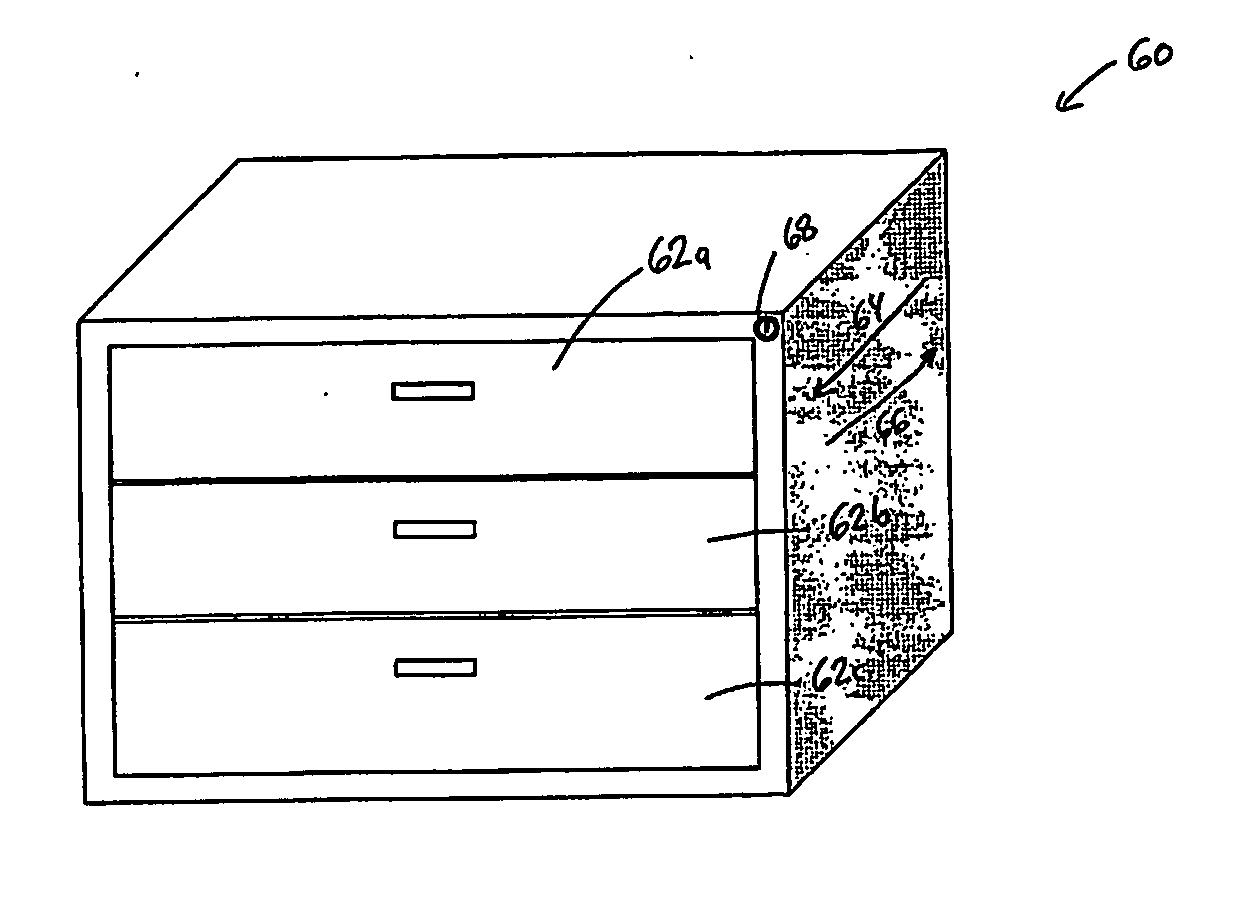Interlock mechanism for lateral file cabinets
- Summary
- Abstract
- Description
- Claims
- Application Information
AI Technical Summary
Benefits of technology
Problems solved by technology
Method used
Image
Examples
first embodiment
[0083] An interlock 72 according to the present invention is depicted in FIG. 3. Interlock 72 is attached to a drawer slide 70. Interlock 72 is operatively coupled to a cable 74 that runs vertically inside of cabinet 60. In general, interlock 72 operates according to the tension in cable 74. Specifically, cable 74 has two different basic levels of tension. When no drawers are opened and the lock is not activated, cable 74 has a first amount of tension in it. When a single drawer is opened, interlock 72 takes up the slack in cable 74 and creates a second level of tension in cable 74. With the second level of tension, the slack in cable 74 is reduced to such a small level that no other drawers in the cabinet 60 can be opened. When the open drawer is closed, the slack in the cable 74 returns and any other single drawer may thereafter be opened. If a lock is included with the cabinet 60, the lock is adapted to alter the tension in cable 74. When in the locked position, the lock removes ...
second embodiment
[0102] An interlock 72′ according to the present invention is depicted, either partially or wholly, in FIGS. 28-50. Interlock 72′, like interlock 72, is adapted to be attached directly to a drawer slide 70′. While both interlocks 72 and 72′ are depicted attached to the back ends of drawer slides 70 and 70′, it will be appreciated that they can be attached to the drawer slides at any desirable location along the drawer slides' length. Interlock 72′ operates in conjunction with a cable 74 in a similar manner that interlock 72 operates. Specifically, interlock 72′ allows only a single drawer to be open at a given time. If a lock is included in the cabinet, the lock is in communication with cable 74 and can change the amount of slack in cable 74. If the lock is activated, cable 74 has little or no slack, and none of the drawers may be opened. Interlock 72′ differs from interlock 72 in that a small portion of the pulling force exerted on a drawer in first direction 64 is transmitted to c...
PUM
 Login to View More
Login to View More Abstract
Description
Claims
Application Information
 Login to View More
Login to View More - R&D
- Intellectual Property
- Life Sciences
- Materials
- Tech Scout
- Unparalleled Data Quality
- Higher Quality Content
- 60% Fewer Hallucinations
Browse by: Latest US Patents, China's latest patents, Technical Efficacy Thesaurus, Application Domain, Technology Topic, Popular Technical Reports.
© 2025 PatSnap. All rights reserved.Legal|Privacy policy|Modern Slavery Act Transparency Statement|Sitemap|About US| Contact US: help@patsnap.com



